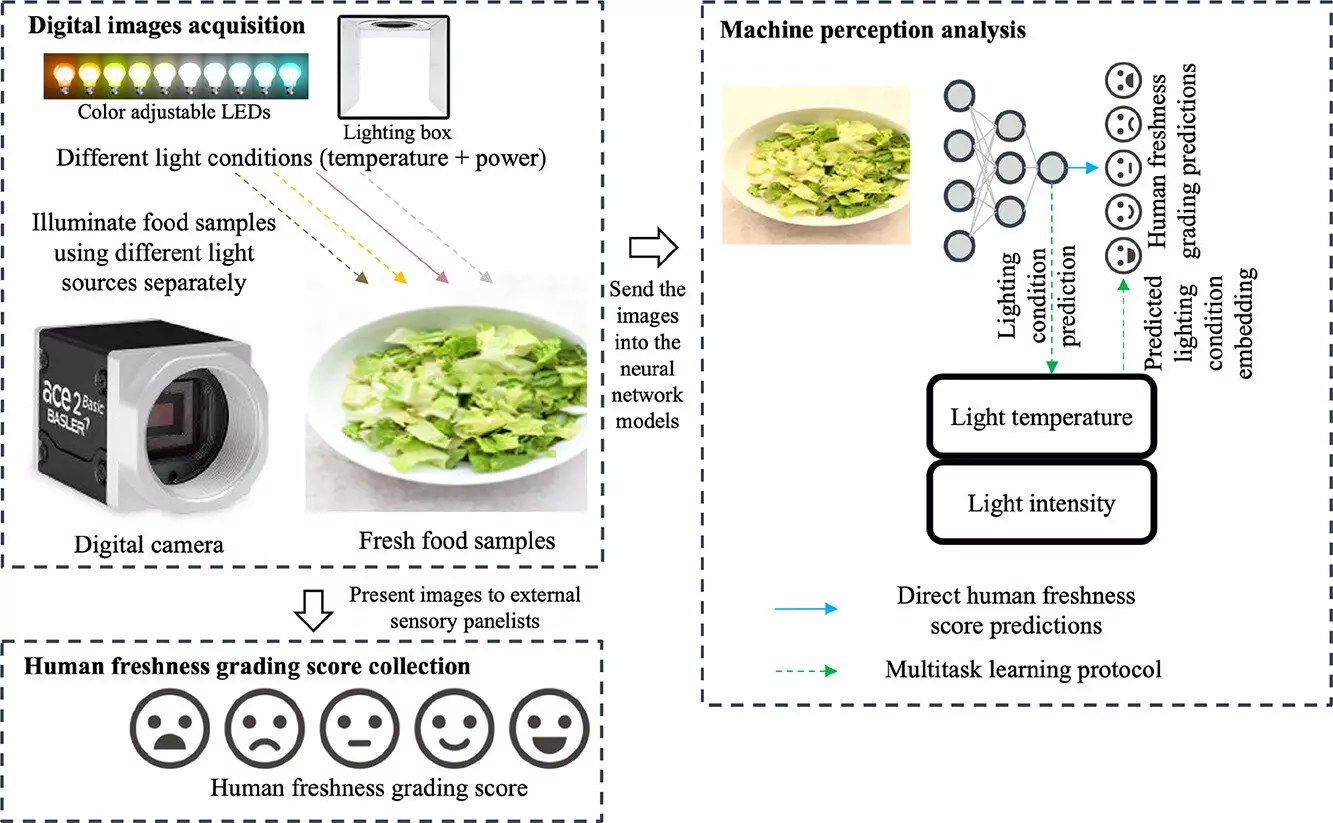When shopping for fresh produce, consumers often find themselves confronted with a bewildering array of choices. The quest for the ripest, freshest fruit or the crispiest vegetable raises an essential question: could technology lend a helping hand in this timeless endeavor? Despite ongoing advancements, current machine-learning systems dedicated to predicting food quality struggle to match the nuanced capabilities of human judgment, particularly in understanding environmental variables that influence visual assessment. A recent study from the Arkansas Agricultural Experiment Station, led by Dongyi Wang, an expert in smart agriculture and food manufacturing, aims to bridge this gap.
The publication of this study in the Journal of Food Engineering represents a crucial step in understanding how human perceptions can be integrated into machine-learning models. While existing algorithms excel in basic object recognition, they often lack the reliability needed for food quality evaluation. Wang emphasizes, “When studying the reliability of machine-learning models, the first thing you need to do is evaluate human reliability.” This comment highlights the intrinsic variability found in human perception and suggests a method to enhance machine learning to be more accurate and consistent.
Utilizing a systematic approach, the research team focused on how different lighting conditions affected human judgments about lettuce quality. A series of sensory evaluations conducted at the Sensory Science Center provided valuable data, allowing researchers to understand how various environmental factors play a role in food assessment. For instance, how does a change from a warm to a cool light impact the perceived freshness of lettuce? Answering such questions could revolutionize how both consumers and processors approach food quality.
The methodology employed in the study was thorough. Over 100 participants evaluated images of Romaine lettuce under diverse lighting conditions aimed at simulating natural variabilities encountered in everyday settings. Participants rated freshness using a scale from 0 to 100 based on the browning of the lettuce over eight days. The images, resulting from this meticulous evaluation, formed a robust dataset that uniquely combined human subjective assessments with machine learning processes.
The impressive outcome was that machine learning models trained on this dataset achieved a remarkable 20 percent decrease in prediction errors when compared to models that did not factor in human perception variability. This significant improvement illustrates the potential of leveraging human insights to inform and refine artificial intelligence systems in agriculture.
The ramifications of this research extend beyond machine learning; it signals a shift in how food processing and grocery retail are conducted. The findings could pave the way for the creation of applications designed to guide consumers in selecting high-quality produce, essentially enabling shoppers to make informed decisions effortlessly. Furthermore, grocery stores could redesign their displays based on data insights, presenting fruits and vegetables in a manner that accentuates their best qualities.
Moreover, the implications of training machine vision systems with human perceptions ripple out across various sectors—this could lead to meaningful improvements in quality assessments in not just agriculture, but also in sectors like jewelry and textiles, where visual appeal is paramount. The research ultimately proposes a new paradigm where machine learning doesn’t merely replicate human understanding but enhances it.
The study represents a collaboration among various departments at the University of Arkansas, including contributions from professionals in agricultural engineering and industrial engineering. This cross-disciplinary approach underscores an essential truth: tackling complex real-world problems often requires voices and expertise from multiple domains. As technology continues to evolve, the partnership among scientists, farmers, retailers, and consumers will be fundamental in harnessing machine learning capabilities to improve food production, quality assessment, and ultimately, consumer satisfaction.
As we stand at the intersection of technology and agriculture, innovative research such as this opens exciting possibilities. By refining machine learning models through human insights, we are not merely improving technology; we are enhancing our overall relationship with food. The possibility of having a mobile app that assists shoppers in selecting the finest apples or the freshest lettuce is not just a dream—it is rapidly becoming a reality.


Leave a Reply